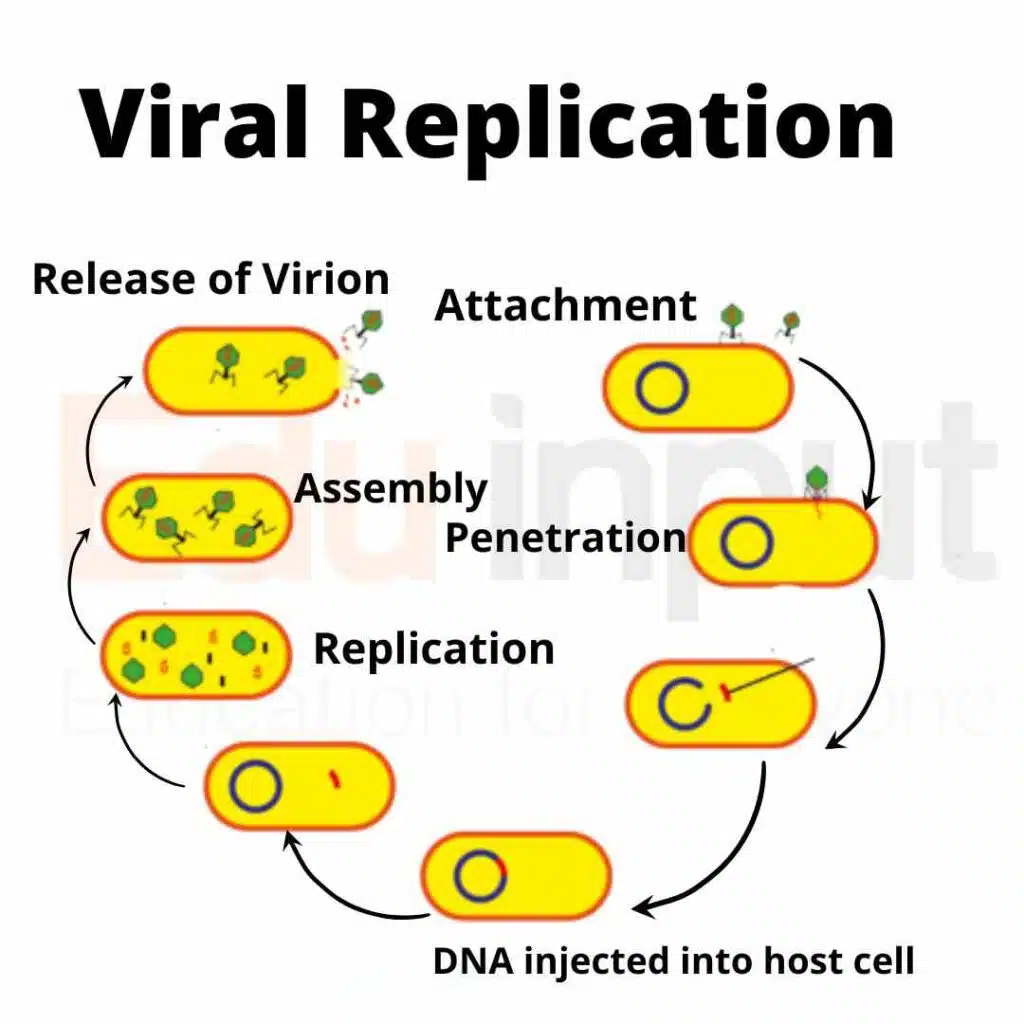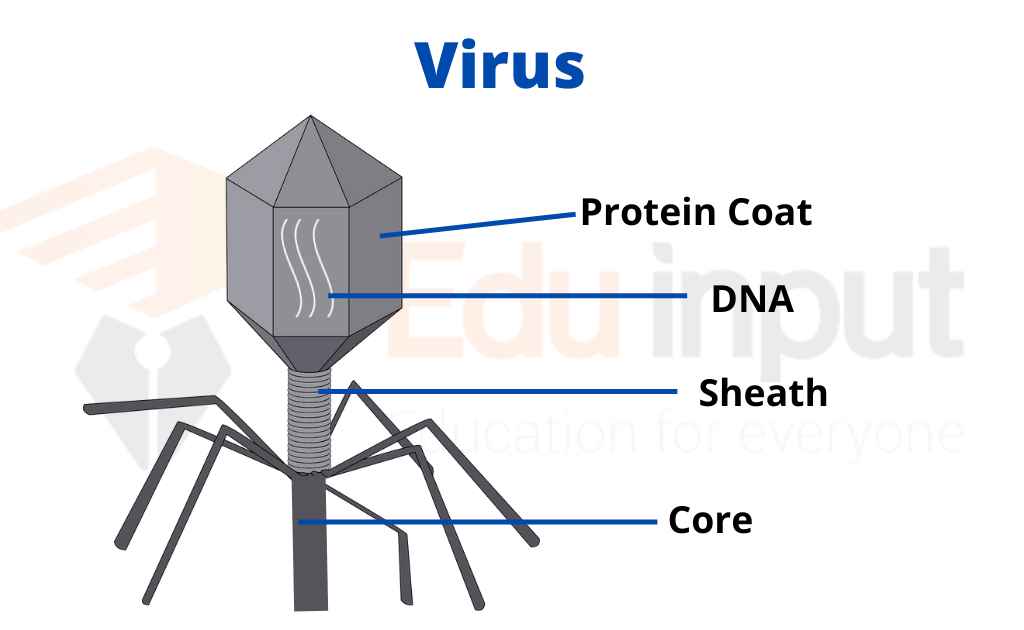Reproduction in Viruses | Step-by-Step Guide to Viral Replication
Viruses are obligate intracellular parasites. They reproduce only within a host cell. Viruses lack the enzyme responsible for their DNA replication. So they use the metabolic machinery of the host for their replication. Isolated viruses are protein-coated particles that are transmitted from one host cell to another.
Host Range
All the viruses infect only a limited range of hosts. It is called the host range of that enzyme. Viruses identify their host with a padlock. There are specific receptor molecules present on the host cell’s plasma membrane.
Similarly, on the surface of the virus, some proteins are present, that help in attachment. Both receptors and proteins are involved in the lock and key attachment of the virus and host.
Some viruses have wide host ranges. They infect many host species. For example, the rabies virus can infect more than one species.
Some species have a narrow host range. They infect only one species. For example, the phage virus only infects e. Coli bacteria.
Steps of Viral Replication
There are the following stages of virus infection and replication:
1- Penetration:
The first step of infection is penetration. The mechanism of penetration differs in different species. For example, phage viruses use their tail to inject DNA into the body of the host cell (bacterium).
Their tails have special enzyme lysozyme which helps to break the cell wall and cell membrane of the bacterial cell. In some cases, complete virion enters into the host like the aids virus.
2. Replication:
Viral DNA controls the metabolic machinery of the host. It re-programs the viral genes and manufactures its capsids. Most DNA viruses use the DNA polymerase of the host cell for transcription (DNA synthesis) RNA viruses contain their enzymes to initiate replication within the host. the host cell lacks the enzyme to copy RNA.
Nucleotides for nucleic acid synthesis are provided by the host cell. The virus uses host enzymes, ribosomes, tRNAs, amino acids, and other machinery
3. Assembly of virion:
Viral nucleic acid molecules and capsids produced during replication assemble in this step. Their assembly into new viruses is a spontaneous process known as self-assembly.
4. Release of virions:
Hundreds or thousands of viruses emerge from the host cell. In most cases, the host cell is destroyed during the process. The destruction of host cells causes symptoms of viral diseases in the host cells.
For example, colds and influenza viruses respiratory passages and destroy the mucous membrane. It causes symptoms of cold and influenza. The newly formed viruses infect other cells and the cycle continues.







Leave a Reply